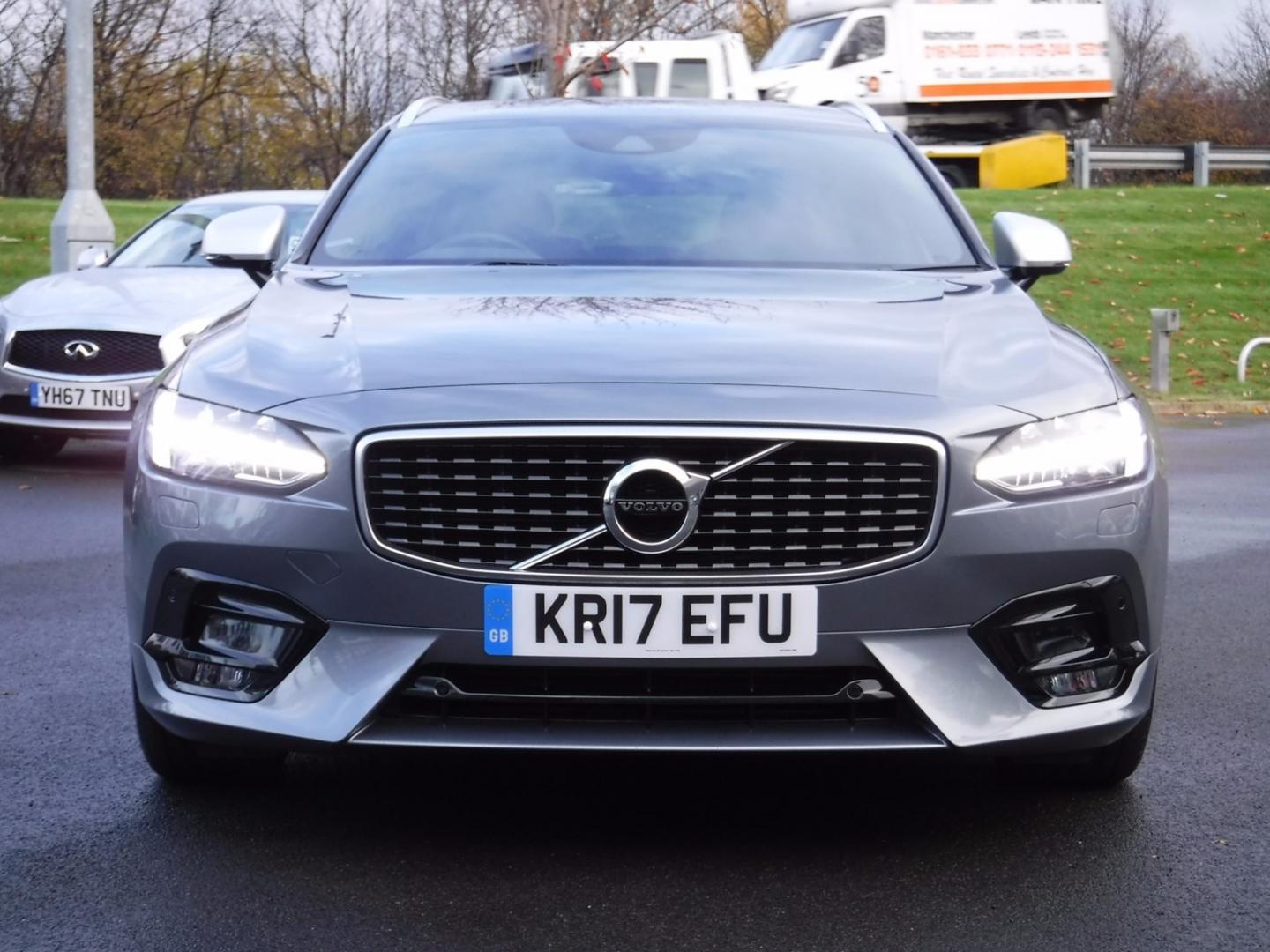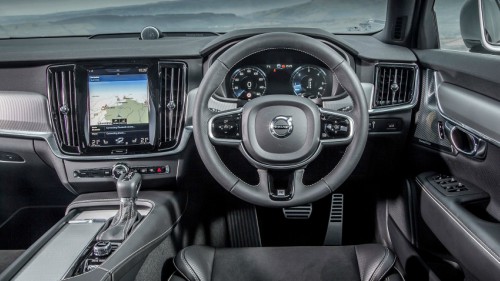Volvo has seriously improved its ‘shoebox style’ look for its estate cars. The Swedish automaker always made safe cars. It also produced awesomely comfortable motors, but they just didn’t have a sex factor. They do now though, as CarCliq’s motoring journalist, Tim Barnes-Clay, reports.
Volvo’s previous estate effort was excellent, but long-in-the-tooth, V70. The car looked good – far better proportioned than its S80 sister saloon. Then, last year, the V90 estate and the S90 saloon were ushered in; two handsome motors with more than a suggestion of athletic appeal knitted into the lavishness, room and ride comfort that Volvos the world over always offer.
These latest products have been a victory in the year, or so, they’ve been on the market in Britain – although the V90 is the one that most buyers or company car punters choose. Because it’s an estate, the V90 is more down-to-earth, even though the Scandinavian car manufacturer has made the load-lugging compartment a tad tighter than the preceding V70’s.
For those who like flexibility and don’t want the ‘pedestrian’ estate car persona, Volvo has sewn its R-Design seed into the V90. This allows you to still have the practicality of an estate car, merged with the sporty good looks of a car that doesn’t say you’re a boring middle-aged motorist.
Volvo’s previous estate effort was excellent, but long-in-the-tooth, V70. The car looked good – far better proportioned than its S80 sister saloon. Then, last year, the V90 estate and the S90 saloon were ushered in; two handsome motors with more than a suggestion of athletic appeal knitted into the lavishness, room and ride comfort that Volvos the world over always offer.
These latest products have been a victory in the year, or so, they’ve been on the market in Britain – although the V90 is the one that most buyers or company car punters choose. Because it’s an estate, the V90 is more down-to-earth, even though the Scandinavian car manufacturer has made the load-lugging compartment a tad tighter than the preceding V70’s.
For those who like flexibility and don’t want the ‘pedestrian’ estate car persona, Volvo has sewn its R-Design seed into the V90. This allows you to still have the practicality of an estate car, merged with the sporty good looks of a car that doesn’t say you’re a boring middle-aged motorist.

 The R-Design aspect has always given Volvos that additional something – it’s made the cars zestier to look at, and fierier in the way they behave. The V90 R-Design is a proper looker – a great piece of work all round. Its kerbside allure is heightened even further, thanks to its hunkered down ride height (15mm lower), gloss black grille, 18-inch alloy wheels and silver door mirror caps.
The R-Design aspect has always given Volvos that additional something – it’s made the cars zestier to look at, and fierier in the way they behave. The V90 R-Design is a proper looker – a great piece of work all round. Its kerbside allure is heightened even further, thanks to its hunkered down ride height (15mm lower), gloss black grille, 18-inch alloy wheels and silver door mirror caps.The pizzazz continues in the interior, with metal-effect inlays, electrically operated leather and nubuck sports seats, sports pedals and an LED driver’s display. Oh yes, the tread plates are illuminated, too.
My test vehicle, the V90 D5 Powerpulse AWD R-Design, came with an eight-speed automatic gearbox. This is linked to a 2.0-litre turbo diesel powerplant delivering 235 horses - a well-assessed output for routine motorway driving. It’s brisk enough for most appetites, realising 62mph in just 7.2 seconds. But it is cost-effective, too. If you get beyond 50mpg from this engine, I wouldn’t be flabbergasted.
The Volvo V90 is enlivening when compared with its rear-wheel drive Teutonic counterparts. In D5 form, it has all-wheel-drive and holds the road like your four-year-old held your hand on their first day of school. The Volvo feels full of beans, thanks to the weight of the steering and pedals - and while this is no diminutive vehicle, it feels far from overpowering, due to how compliant it is.
Because of the R-Design’s dropped, less yielding suspension, this V90 variant will corner swiftly, without detectable body roll. However, the stumbling block is that there’s no option to change the suspension on the go. That said, air suspension can be used instead when you purchase the Volvo new, although it will cost you £1,500 for the pleasure. On the ordinary non-R-Design models you are presented with a more bolstered ride. But if you have your heart and mind set on a sports estate, and don’t mind harder suspension, then the standard V90 R-Design is a top choice of car.
Pros ‘n’ Cons
Fast Facts
The Volvo V90 is enlivening when compared with its rear-wheel drive Teutonic counterparts. In D5 form, it has all-wheel-drive and holds the road like your four-year-old held your hand on their first day of school. The Volvo feels full of beans, thanks to the weight of the steering and pedals - and while this is no diminutive vehicle, it feels far from overpowering, due to how compliant it is.
Because of the R-Design’s dropped, less yielding suspension, this V90 variant will corner swiftly, without detectable body roll. However, the stumbling block is that there’s no option to change the suspension on the go. That said, air suspension can be used instead when you purchase the Volvo new, although it will cost you £1,500 for the pleasure. On the ordinary non-R-Design models you are presented with a more bolstered ride. But if you have your heart and mind set on a sports estate, and don’t mind harder suspension, then the standard V90 R-Design is a top choice of car.
Pros ‘n’ Cons
- Appearance √
- Equipment √
- Frugality √
- Room √
- Firm Ride X
Fast Facts
- Max speed: 149 mph
- 0-62 mph: 7.2 secs
- Combined mpg: 57.6
- Engine layout: 1969 cc 4-cylinder twin turbo diesel
- Max. power (PS): 235
- CO2: 129 g/km
- Price: £44,865
Written by motoring journalist, Tim Barnes-Clay.